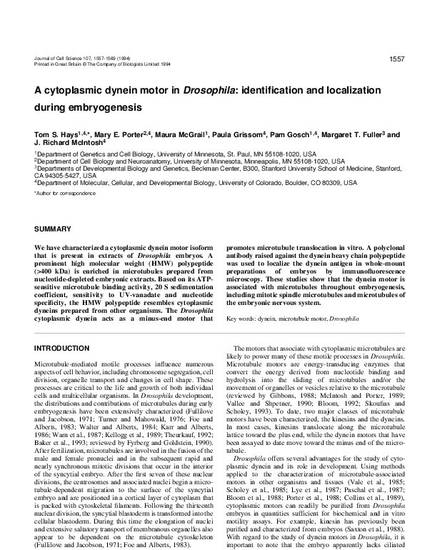
Article
A cytoplasmic dynein motor in Drosophila: identification and localization during embryogenesis
Journal of Cell Science
(1994)
Abstract
We have characterized a cytoplasmic dynein motor isoform that is present in extracts of Drosophila embryos. A prominent high molecular weight (HMW) polypeptide (> 400 kDa) is enriched in microtubules prepared from nucleotide-depleted embryonic extracts. Based on its ATP-sensitive microtubule binding activity, 20 S sedimentation coefficient, sensitivity to UV-vanadate and nucleotide specificity, the HMW polypeptide resembles cytoplasmic dyneins prepared from other organisms. The Drosophila cytoplasmic dynein acts as a minus-end motor that promotes microtubule translocation in vitro. A polyclonal antibody raised against the dynein heavy chain polypeptide was used to localize the dynein antigen in whole-mount preparations of embryos by immunofluorescence microscopy. These studies show that the dynein motor is associated with microtubules throughout embryogenesis, including mitotic spindle microtubules and microtubules of the embryonic nervous system.
Keywords
- dynein,
- microtubule motor,
- Drosophila
Disciplines
Publication Date
1994
Publisher Statement
© 1994 by Company of Biologists
Citation Information
Tom S. Hays, Mary E. Porter, Maura McGrail, Paula Grissom, et al.. "A cytoplasmic dynein motor in Drosophila: identification and localization during embryogenesis" Journal of Cell Science Vol. 107 Iss. 6 (1994) p. 1557 - 1569 Available at: http://works.bepress.com/maura-mcgrail/10/
